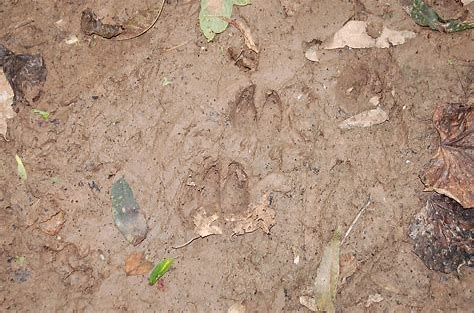
How to identify pests in the garden? Identifying wild animals in your garden is not only fun but can provide useful information about the environment around you. Learning how to determine which pets inhabit the area can help you create a safe and healthy habitat for both you and the animal species living near you. In this article, we will discuss some tips on how to identify different animals in your garden.
Key Takeaways
- Identifying the species causing damage in your garden is the first step to finding a solution. The EDIS publication WEC323 provides an outline of steps for dealing with nuisance wildlife problems and images of similar damage that can help you identify which animal is responsible.
- Animal scat and tracks can be used to identify what types of wildlife are present in an area. Droppings of different sizes, shapes, and textures will indicate different species, such as rats, mice, chipmunks, bats, rabbits, white-tailed deer, and squirrels.
- Soil disturbance is a common sign that wildlife is present in residential areas. Small holes, less than three inches in diameter, are usually dug by chipmunks, voles, Norway rats, or snakes, while larger holes (6–12 inches in diameter) located near the base of trees, logs, or walls were likely made by red foxes, skunks, armadillos, or coyotes.
- Bark damage can indicate that deer or rabbits are present in your garden. It is important to learn to identify the difference between rabbit and deer damage so that you can take appropriate action.
- Some wildlife species are protected by law and should not be harmed or removed from their habitat without permission from local authorities. Taking the appropriate steps will help ensure that your yard remains safe and free from damage caused by nuisance wildlife.
How to Identify Pests in the Garden
Identifying the species causing damage in your yard is the first step to finding a solution. The EDIS publication WEC323 provides an outline of steps for dealing with nuisance wildlife problems and images of similar damage that can help you identify which animal is responsible.
Once you have identified the species responsible for the damage, you can begin to look into solutions such as exclusion techniques or repellents. It is important to remember that some wildlife species are protected by law and should not be harmed or removed from their habitat without permission from local authorities. Taking these steps will help ensure that your yard remains safe and free from damage caused by nuisance wildlife.
Animal Scat and Tracks

Animal scat and tracks can be used to identify what types of wildlife are present in an area. Droppings of different sizes, shapes, and textures will indicate different species, such as rats, mice, chipmunks, bats, rabbits, white-tailed deer, and squirrels.
Animal scat and tracks can be used to identify the wildlife living in an area. Mammal tracks are easily recognizable due to their distinct shape and size, while bird tracks may be harder to identify but can still be done with practice.
Soil Disturbance
Soil disturbance is a common sign that wildlife is present in residential areas. Small holes, less than three inches in diameter, are usually dug by chipmunks, voles, Norway rats, or snakes. These diggings are generally not problematic and can be easily overlooked.
However, if the soil disturbance is extensive or there are one or more large burrows present, it may be an indication of a larger problem.
Larger holes (6–12 inches in diameter) located near the base of trees, logs, or walls were likely made by red foxes, skunks, armadillos, or coyotes. It’s important to take a close look at the size and shape of these diggings to determine which type of wildlife is responsible for them.
If you suspect that wildlife may be causing soil disturbance on your property it’s best to contact a professional who can help identify the culprit and provide advice on how to address the issue.
Bark Damage

Trees can suffer from bark damage caused by gray squirrels or male deer. Squirrels may remove patches of bark from trunks and branches, while deer rub their antlers against tree stems to remove velvet. This activity can leave trees vulnerable to disease and even death if not resolved.
Animal damage to trees can be harmful, so steps should be taken to prevent it. If damage does occur, a professional arborist should be consulted and pruning may help reduce the risk of further injury or infection.
Vegetation Clipping
Vegetation clipping, caused by a variety of species such as rabbits, deer, and beaver, can be identified by the size and shape of the tooth marks left behind. Rabbits leave neat angled cuts while deer rip leaves off, resulting in a jagged pattern occurring higher up on the plant. By examining the tooth marks it is possible to determine which species caused the damage.
Vegetable Garden Raiding
Vegetable gardens in summer may be targeted by wildlife, such as raccoons, coyotes, deer and wild pigs that prey on watermelons and peanuts. Raccoons typically dig small holes and rake out the contents, while coyotes bite holes into the fruit and deer and pigs paw them to break them open.
To keep wildlife away from vegetable gardens, gardeners can use fencing, netting, motion-activated sprinklers, animal repellents, and prompt removal of ripe fruits or vegetables.